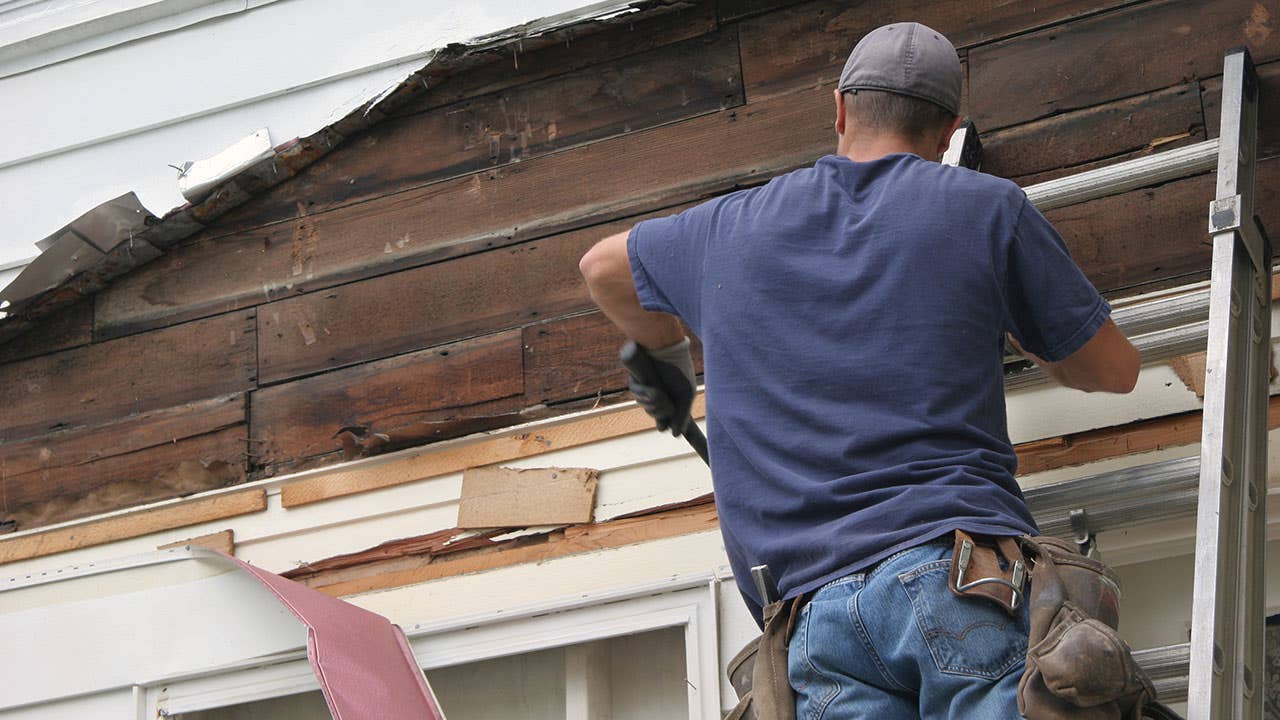Best home improvement loans with bad credit

The Bankrate promise
At Bankrate we strive to help you make smarter financial decisions. While we adhere to strict , this post may contain references to products from our partners. Here's an explanation for .
Key takeaways
- You can get approved for a home improvement loan with a bad credit score, but it’s likely that you’ll pay a high interest rate.
- Borrowers with bad credit are more likely to be offered smaller loan amounts.
- It’s best to build up your credit score before applying for a home improvement loan.
A large home improvement project like a kitchen remodel or a total roof repair may come with a hefty price tag that requires financing. However, those with bad credit — which lenders often define as a FICO score below 630 — may have a harder time getting approved for a home improvement loan.
Thankfully, there are lenders that offer bad credit loans for home improvement. These loans can help you get the funding you need to complete your renovation project, although it’s common for these lenders to charge higher-than-average rates.
Best home improvement loans with bad credit
OneMain Financial
-
Catering to borrowers with bad and fair credit, OneMain Financial offers fairly small unsecured loans with an involved application process. Secured loans are also available if you’re willing to provide collateral. If you’re having trouble finding home improvement loans with bad credit, OneMain Financial might be the right fit.
-
Pros
- Secured loans available.
- Joint applications allowed.
- Quick funding.
Cons
- Low maximum amount.
- Several fees.
- Limited availability.
Upstart
-
One of Upstart’s biggest draws is the fact that it has extremely generous credit requirements. Scores as low as 300 — the lowest possible — can still potentially qualify for a loan with Upstart. It factors in other information, such as education and employment, when determining eligibility. The maximum loan amount is also $50,000, so you can potentially fund a bigger home improvement project.
-
Pros
- No minimum credit score.
- Next-day funding available.
- High maximum amount.
Cons
- Potentially high origination fee.
- No co-borrowers.
- Only two loan terms available.
Avant
-
If you have bad credit, you may qualify for a home improvement loan through Avant. It offers a mobile app you can use to keep track of your payment history and remind you of upcoming payments. Avant also has customer support available seven days a week in case you need assistance with your application or loan.
-
Pros
- Low minimum credit requirement.
- Mobile app for loan management.
- Customer service available all week.
Cons
- Potentially high origination fee.
- No co-borrowers.
- Limited availability.
How to build up your credit to get a home improvement loan in 3 steps
Having bad credit could be a hurdle when it comes to qualifying for a home improvement loan. These three tips may help boost your scores enough to avoid a bad credit home improvement loan.
- Check your credit report and credit score before applying. Make sure you’re meeting the lender’s minimum requirements and look over your credit report for errors.
- Pay your bills on time. Making at least the minimum payments on all your outstanding loans and credit cards on time is key to creating and maintaining a positive repayment history.
- Avoid maxing out your credit cards. Paying down as much of your monthly balance as you can and reducing your card usage is the easiest way to improve your credit score. However, don’t close the account as that will have an adverse effect on your credit.
Keep in mind that there’s no magic fix when it comes to building your credit. It will take some time so if your home improvement project can wait, you may be able to score higher rates or more favorable terms with a better score.
Home improvement financing alternatives
If you’ve built up a good amount of equity in your home, you may want to consider home equity financing options for bad credit versus personal loans.
Home equity loan
A home equity loan is a type of second mortgage you can take out on your home to pay for home improvement project expenses. Recent spikes in mortgage rates make them about as expensive as personal loan rates, especially if you have bad credit.
Home equity line of credit (HELOC)
A HELOC is like a home equity loan except instead of disbursing the funds in a lump sum, it acts as a revolving credit line that works like a credit card. HELOCs come with variable rates, but many offer interest-only options at first to keep your payment low. A HELOC is good if you have ongoing improvements and aren’t sure when you’ll need the money — or how much.
Pros and cons of home equity vs. a personal loan

Pros
- Terms of up to 20 years.
- Potential tax benefits.
- Revolving option with HELOC.

Cons
- Maximum amount depends on your home equity.
- Your home is used as collateral.
- Lenders typically require a credit score of 620.
The bottom line
If you need to fix up your home before you have the time to work on your credit score, you still have bad credit loan options to finance the improvements. Although you’ll pay more, the extra interest may be tax deductible if you go for a home equity product. The renovations could also boost the value of your home, which means you’ll make a bigger profit if you sell it.
Use a loan calculator before applying for a home improvement with bad credit to determine if you can afford the monthly payments, both now and in the long term. Making the monthly loan payments on time and in full, not maxing out your credit cards and not over borrowing are sure-fire ways to protect your finances while improving or renovating your home.
Related Articles



